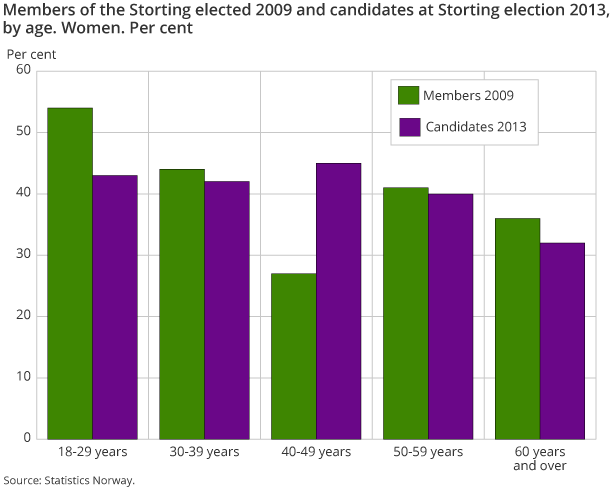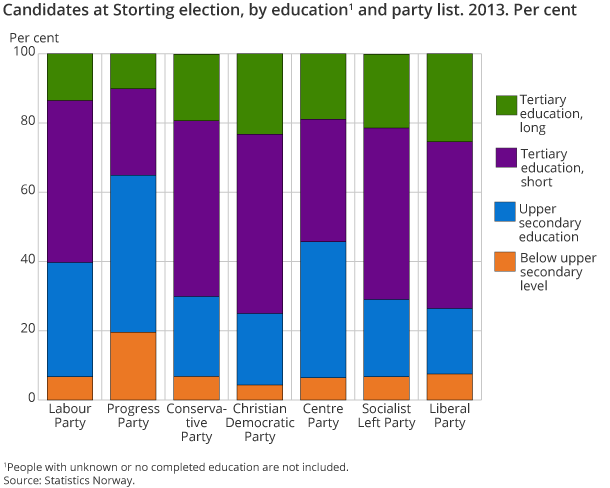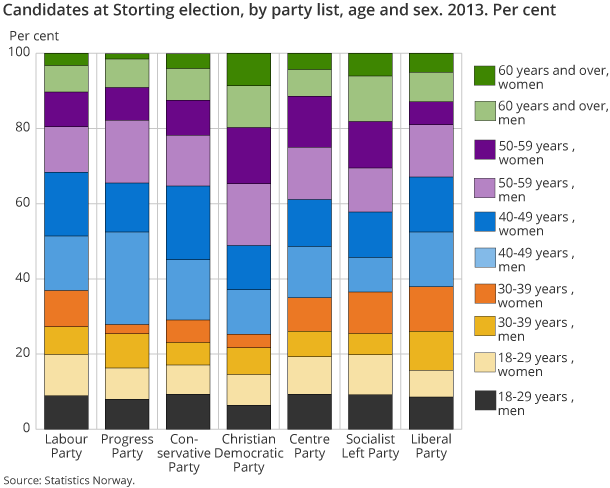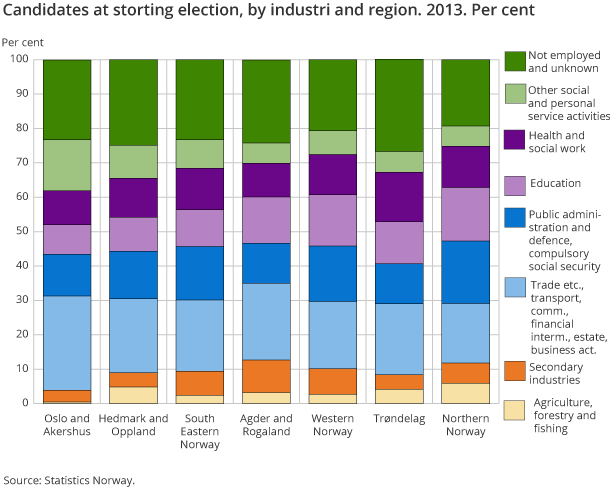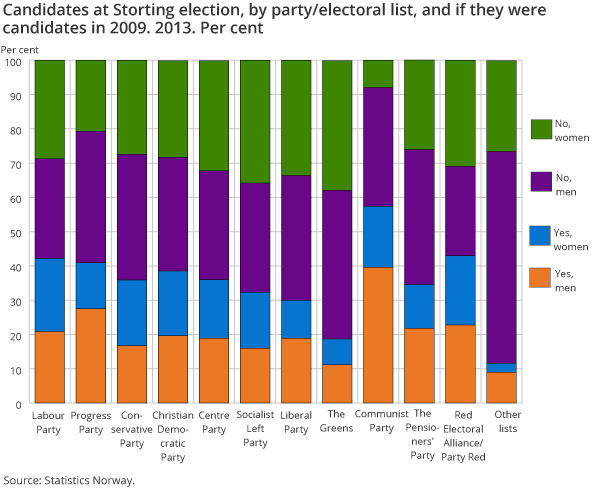Content
Published:
This is an archived release.
Fewer female candidates for the Storting elections
In this year’s Storting elections, just over 40 per cent of the candidates are women. This is two percentage points lower than in the elections four years ago. The Liberal Party and the Progress Party have had the largest increase in male candidates.
| 2013 | |||
|---|---|---|---|
| Both sexes | Males | Females | |
| Total | 4 081 | 2 437 | 1 644 |
| Labour Party | 282 | 141 | 141 |
| Progress Party | 276 | 182 | 94 |
| Conservative Party | 281 | 150 | 131 |
| Christian Democratic Party | 280 | 148 | 132 |
| Centre Party | 280 | 142 | 138 |
| Socialist Left Party | 282 | 135 | 147 |
| Liberal Party | 280 | 155 | 125 |
| Rødt | 272 | 133 | 139 |
| Other lists | 1 848 | 1 251 | 597 |
Among the Storting parties, there are roughly as many male as female candidates, except for from the Progress Party, the Liberal Party and the Conservative Party. The Liberal Party and the Progress Party have had an increase of respectively 5 and 3.5 percentage points in male candidates since the last elections. Two out of three Progress Party candidates are male.
High level of education among candidates
As was the case in the last elections, the education level is higher among the 4 081candidates than in the population as a whole (16 years of age and older). 52 per cent of the candidates have higher education, compared to 29 per cent in the population as a whole. Twice as many candidates have a long higher education as in the population. Two out of three of the Socialist Left Party, Liberal Party, Christian Democrats and the Conservative Party candidates have higher education.
28 per cent of the population have lower secondary school as their highest level of education; among the candidates, that number is 15 per cent.
Many public employees amongst the candidates
Many of the Storting parties have recruited their candidates from the public sector. 42 per cent of the Labour party’s candidates are from public administration and defences. One in four of the candidates for the Social Left Party come from the education sector, as is the case for one in five of the candidates for the Liberal Party, the Christian Democratic Party and the Party Red.
77 per cent of the candidates are in employment, compared to 74 per cent in the population from 16 to 74 years. More than 90 per cent of the Storting parties’ candidates are in employment, except for the Socialist Left Party.
13 parties running for election in all counties
13 parties have lists in every county for the elections this autumn, including the seven parties that are represented at the Storting today. In total, there are 21 parties the public can vote for in one or more counties.
Contact
-
Tove Bergseteren
E-mail: tove.bergseteren@ssb.no
tel.: (+47) 99 79 08 19
-
Statistics Norway's Information Centre
E-mail: informasjon@ssb.no
tel.: (+47) 21 09 46 42

